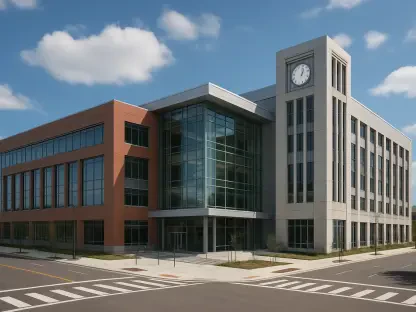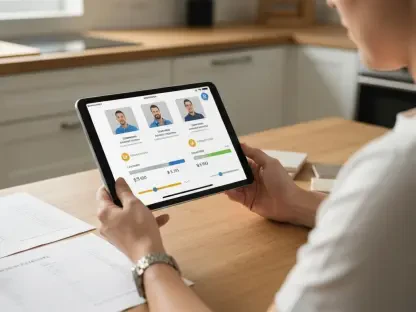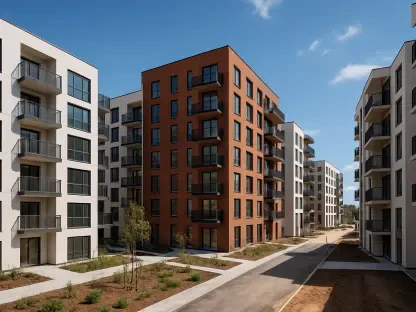The Florida real estate market is currently experiencing significant transformation and growth, driven by varied demands and dynamic market trends. From affordable housing initiatives in urban areas to high-end investments focusing on strategic locations, the scope of real estate activities in Florida is diverse and multifaceted. This market growth reflects broader economic trends and financiers’ confidence in the region’s long-term potential. As developers and investors capitalize on these opportunities, communities across Florida, including urban centers and suburban expansions, are witnessing extensive development projects.
Affordable Housing Initiatives
Clearwater’s Transformative Project
One of the most noteworthy projects underway is the redevelopment of a Clearwater apartment building into a community-focused affordable housing project. Located at 801 Chestnut Street, the building, which comprises 208 units, was acquired by Sunrise Affordable Housing Group for $25.5 million. This acquisition marks a strategic return to the building’s original purpose of providing affordable living spaces, reversing its transition in 2020 to market-rate housing. Amid rising housing demand and changing economic conditions, this initiative stands as a testament to the growing need for affordable housing solutions in urban regions.
Sunrise plans to invest an additional $25 million in the property for major renovations. These include modernizing essential infrastructure such as elevators, installing hurricane-impact windows, and replacing outdated roofs and HVAC systems. A key aspect of this project is enhancing accessibility, with upgrades designed to meet Americans with Disabilities Act standards, ensuring inclusivity for potential residents. The development aims to support individuals earning between 30% and 80% of the area’s median income. Such efforts not only benefit residents by providing modern, affordable accommodations but also contribute positively to the community by addressing a critical housing shortage.
Broader Trends and Implications
The shift toward more affordable housing initiatives in Florida is driven by a combination of factors, including significant population growth and increased economic strain on middle- to low-income individuals. Developers recognize the growing necessity of dedicating resources to affordable housing to address these societal needs. This trend is underscored by policies and incentives encouraging such developments, illustrating a commitment to improving living standards and accessibility for broader demographics.
In addition to individual redevelopment projects, there is increasing visibility of partnerships between local governments and private developers aimed at streamlining housing projects. These collaborations highlight a collective understanding of the importance of affordable housing in fostering sustainable community growth. The emphasis is not merely on quantity but also on the quality and long-term benefits these living spaces provide to residents. Ultimately, these efforts are pivotal to enhancing urban resilience and economic stability, mitigating some of the adverse effects associated with rapid urbanization.
High-End Investment Opportunities
Strategic Property Acquisitions
On the opposite end of the spectrum, Florida’s real estate market is also witnessing a surge in high-end investments, characterized by strategic property acquisitions aimed at maximizing return potential. The Symonette-Whelan Team, representing TD Commercial Group, epitomizes this trend, targeting investment-grade properties like grocery stores, medical buildings, and CVS establishments with triple net leases. These acquisitions are typically valued between $5 million and $15 million, commanding cap rates of over 5%, offering investors substantial and secure returns.
The client’s selective approach focuses on lucrative markets such as Fort Myers, Naples, and Tampa, bypassing regions like Daytona and Jacksonville in favor of areas with higher growth potential. This selectivity underscores the role of economic forecasts and demographic trends in shaping high-stakes investment decisions, emphasizing the necessity of targeted asset acquisition strategies. Investors are keen to capitalize on high-demand commercial real estate, particularly in healthcare and essential services, which are recorded to maintain steady performance even in unstable market conditions.
Influences on the Market Landscape
The inclination toward premium real estate investments reflects broader market dynamics fueled by both domestic and international investor interest. Florida’s favorable tax policies, paired with infrastructural developments, make it an attractive destination for substantial financial inflows. This investment pattern elevates the state’s profile as not only a residential haven but also as a business-friendly environment conducive to various ventures. Real estate professionals predict sustained demand for triple net leased assets, as they represent low-risk and often more lucrative real estate investment solutions.
Such investments are anticipated to contribute significantly to regional economic growth, providing a solid foundation for long-term commercial stability. As Florida continues to establish itself as a key player in the national real estate domain, its ability to attract lavish financial investment affirms its strategic geographic and economic advantages. These trends not only enhance property values but also stimulate ancillary industries, boosting job creation and overall economic vitality.
Diverse Investment Spectrum
Community and Service-Oriented Real Estate
Florida’s real estate narrative extends significantly beyond traditional residential and commercial properties, encapsulating a wide range of ventures. A notable example includes Naples’ Meals of Hope’s acquisition of an industrial building from Oakes Farm for $6.5 million, a considerable surge from its prior purchase price. The property, spanning over 18,000 square feet, is equipped with extensive cold storage and warehouse capabilities, supporting the organization’s mission to combat food insecurity.
The transaction underlines the diversity within Florida’s real estate market, highlighting how strategic property investments can serve community-oriented goals. These acquisitions satisfy organizational needs and reveal an evolution in investment interests that balance economic gain with social responsibility. As Florida’s demographics evolve, such investments are poised to play a crucial role in supporting local infrastructure, ensuring vital services reach community members effectively and efficiently.
Agricultural Land Flexibility
Polk County provides another dimension of real estate diversity with the listing of Central Florida Integrated Nursery for $12.5 million. The 29-acre property is exceptionally versatile, accommodating agricultural operations ranging from citrus and ornamental nurseries to medical marijuana cultivation. This highlights the current trend of investors purchasing multifunctional land to capitalize on evolving market demands and regulatory landscapes.
The site represents significant growth potential, especially given the increasing legal and consumer acceptance of medical marijuana and other agricultural products. Investing in such properties secures immediate agricultural output while offering long-term appreciation prospects as Florida’s agricultural industry continues to adjust to market needs. The adaptability of agricultural real estate reaffirms its attractiveness to investors seeking robust, diversified portfolios within a state renowned for its agricultural output.
Suburban Expansions and Future Prospects
Residential Growth Initiatives
In line with Florida’s real estate growth, the development of suburban communities is gaining momentum. The project within Wellen Park’s Oakbend subdivision in North Port exemplifies this trend by planning the introduction of 181 new residential units. This suburban expansion meets the increasing demand for residential spaces among families and individuals seeking lifestyle amenities away from urban centers.
Comprehensive planning includes community facilities such as pools, fitness centers, and pickleball courts, enhancing the quality of life for future residents. These developments align with broader sociocultural shifts encouraging suburban living, where individuals value spacious environments, increased privacy, and reduced congestion. Builders and developers leverage these preferences by creating communities that offer balanced lifestyles and maintain necessary connections to urban job markets.
Future Considerations and Market Stability
The Florida real estate market is undergoing significant changes and growth, fueled by diverse demands and evolving market trends. In urban areas, there’s a strong push for affordable housing, while in prime locations, high-end investments are taking off. This wide range of real estate activities highlights not only the existing economic dynamism but also the financial community’s confidence in Florida’s long-term potential. Encouraged by these opportunities, developers and investors are actively engaging in various projects that stretch across the state, impacting both urban centers and expanding suburbs. As a result, communities in Florida are experiencing a wave of development, with new buildings and infrastructures reshaping landscapes. This growth isn’t just a reflection of immediate commercial interests but also aligns with broader economic trends that suggest a robust and resilient future for the region. The changes underscore a strategic vision aimed at sustaining growth and accommodating a changing population and economy.









